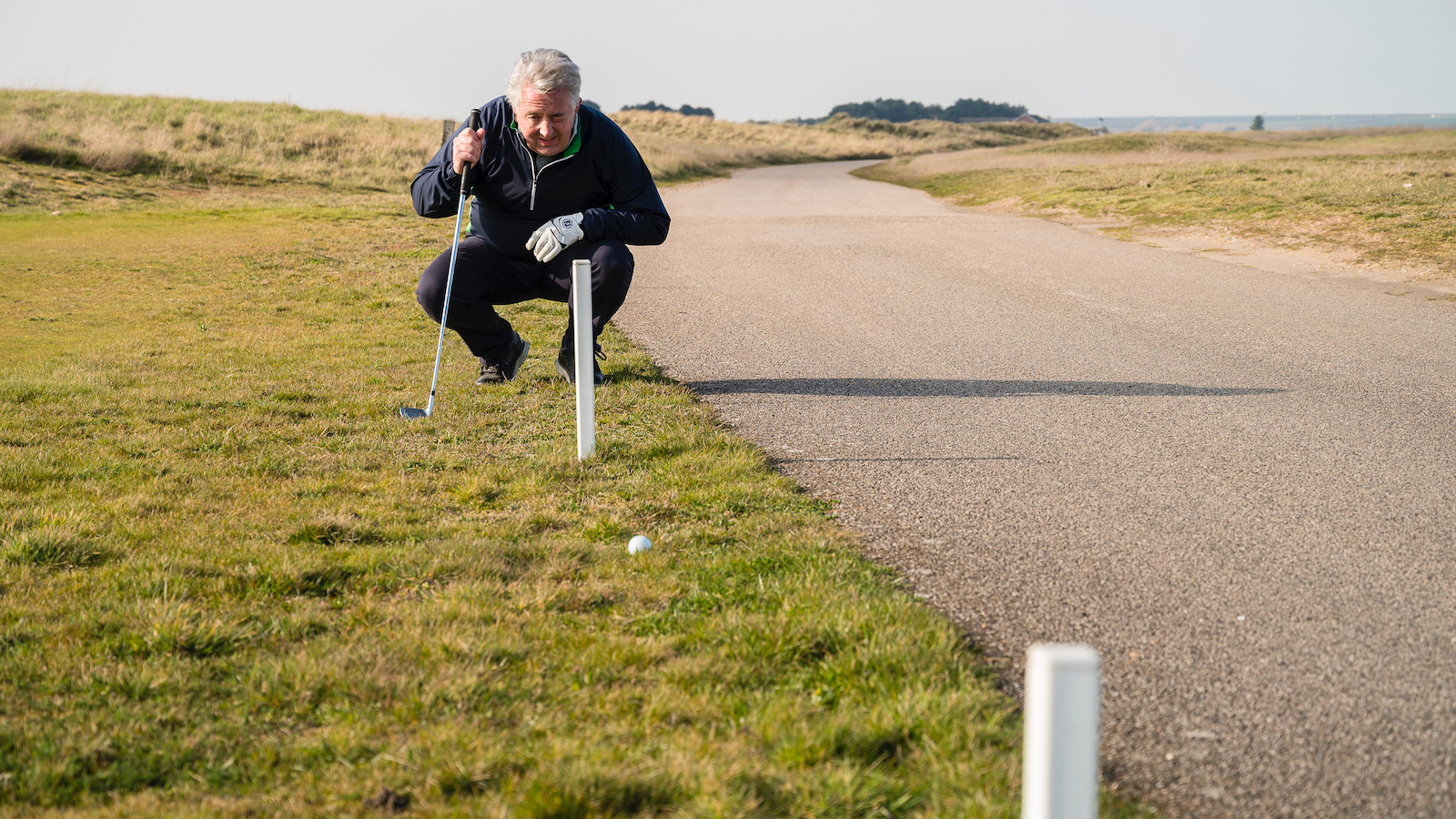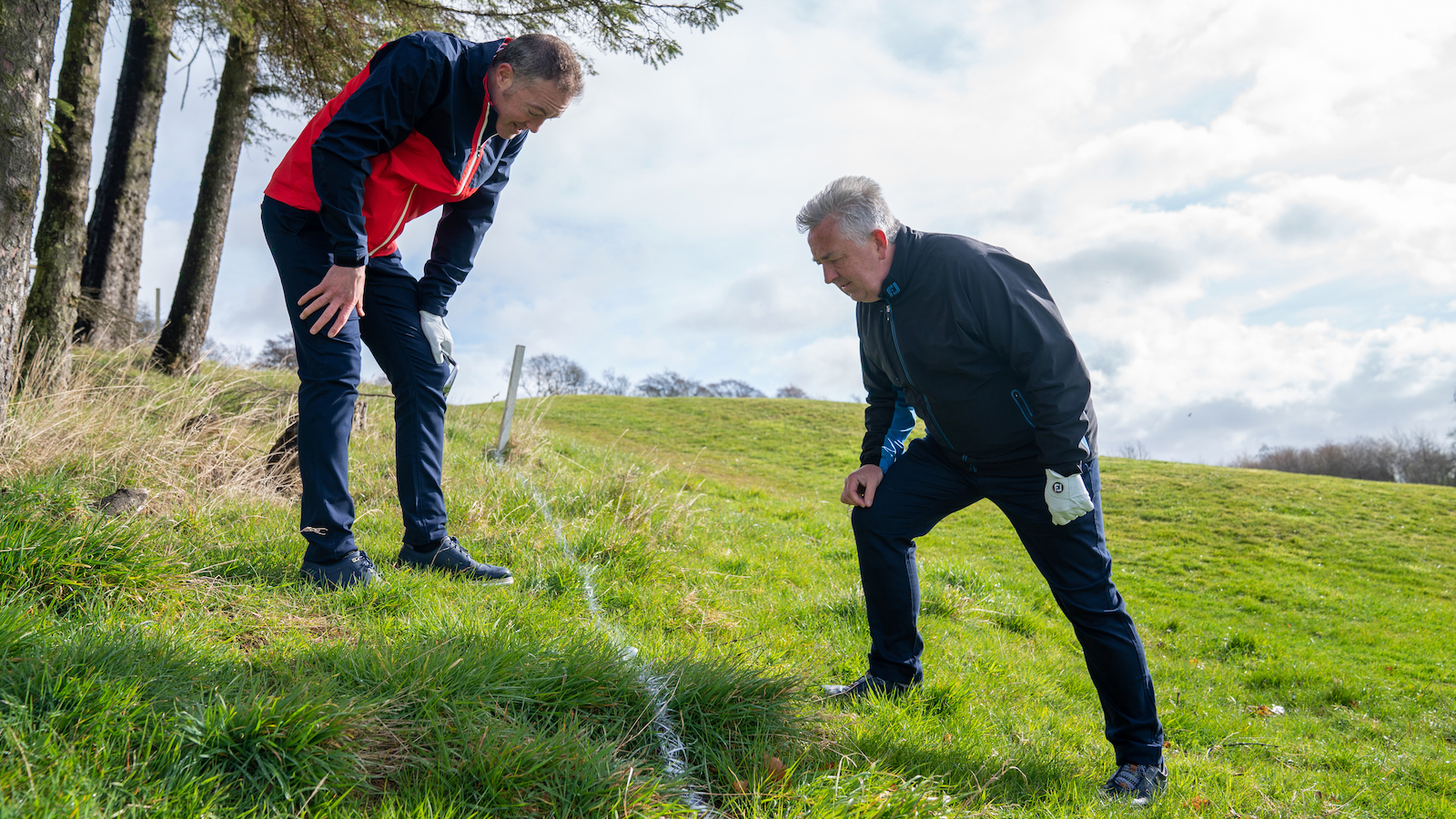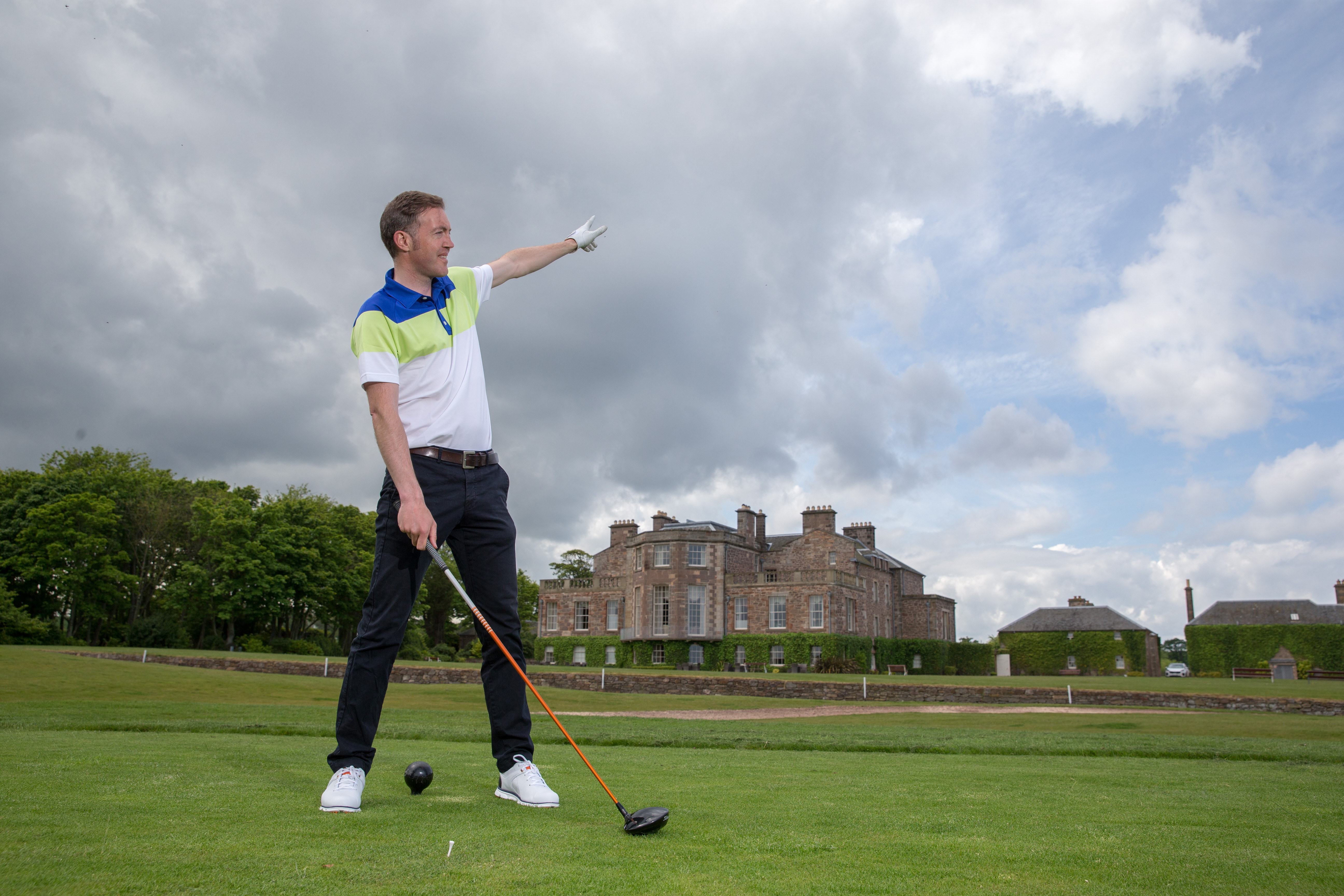
There are still some frequently occurring Rules scenarios that catch golfers out too often, either through not being aware of exactly what a particular Rule says, or mistakenly believing that something is the case when it isn’t… or vice versa!
In this article and the accompanying video, we pick out six such scenarios, which we either see golfers often getting wrong, or know that they do from some of the emails to hit the Golf Monthly Rules query Inbox…
Sprinkler head on line on the fringe
This is not an automatic relief scenario under the Rules of Golf, much as you might like it to be if you wish to putt. You only get free relief if your ball lies on the sprinkler head or it would interfere with your area of intended stance or swing, not simply because it is on your line.

However, some courses will have a Local Rule that does allow relief if your ball lies within two club-lengths of a sprinkler head directly on your line that is also within two club-lengths of the putting green. If no such Local Rule exists, there is no free relief, so always check the Local Rules carefully.
Failing to mark ball’s position before lifting it to identify it
If you are unable to identify your ball, perhaps in thick rough, Rule 7.3 does allow you to lift the ball to make a positive identification if you genuinely need to.
From 2019 onwards you no longer have to call someone over to observe you lifting your ball, but you do still have to mark its position first.

If you fail to mark your ball’s position before lifting it, lift it when not reasonably necessary to do so, or clean it more than is required to identify it, you will incur a penalty stroke under Rule 7.3.
Is a ball out of bounds if it’s on the line?
There is undoubtedly some confusion out there as to exactly when a ball is out of bounds (OOB). On the line somewhere doesn’t necessarily mean in bounds – it is the course-side edge of any white line on the ground (or the course-side points of any white stakes) that represent the boundary line.

If even a small part of the ball overlaps that course-side edge, it is in bounds, even if the majority of the ball lies on the line. But if no part of the ball lies beyond that course-side edge then it is OOB.
So remember, it is the course-side edge that is important when determining whether a ball partly on the line is in or out of bounds.
Don’t be tempted to finish off in matchplay
if your short putt is not conceded in matchplay and your opponent’s ball now lies further from the hole than yours, you can’t simply go ahead and tap it in as you might do in strokeplay. That would constitute playing out of turn under Rule 6.4a as you don’t have the honour at that point.
The good news is that there is no penalty for doing so. The bad news is that your opponent is within his or her rights to cancel the stroke and ask you to replay it in the correct order. Whether or not they do may well depend on whether or not you have holed it!
So, while tapping in would be actively encouraged in strokeplay as part of the ready golf drive, it’s not the same in matchplay where there is more of a psychological dynamic to the order of play (i.e., your short putt will probably become harder if you know you have to hole it).
Failing to replace ball in original spot after you have caused it to move
If you (or your caddie) cause your ball at rest to move, there is still a penalty under Rule 9.4b, whether accidental or not (even if only a few millimetres!).
Yes, there are a few more Exceptions now where there is no penalty, such as if you move your ball when searching for it, or if you move it accidentally on the putting green only, but in all instances, whether there is a penalty or not, you must replace the ball in its original spot before playing on (estimating that spot to the best of your ability if you can’t be 100% sure where it was).
If you fail to replace the ball before playing your next stroke you will get the general penalty for playing from a wrong place – so two strokes in strokeplay or loss of hole in matchplay.
Failing to indicate second ball is a provisional
Rules 18.3 allows you to play a second ball provisionally under stroke and distance if you think your original ball may be lost outside a penalty area or out of bounds.
However, just saying, “I’m going to hit another,” or “I’m going to reload,” isn't enough.

Rule 18.3b says you must make it clear that the second ball you are playing is a provisional ball, either by using those words or making it clear that it is a provisional ball that you only wish to use if you don’t find your original.
If you don’t announce that the second ball is a provisional ball, it automatically becomes the ball in play under stroke and distance and you aren’t allowed to continue with the original ball, even if you find it in the middle of the fairway!







